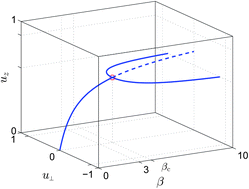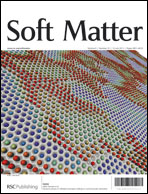An analytic mean-field model for the magnetic response of a ferrofluid monolayer
Abstract
We extend the analysis of the mean-field model introduced in a previous paper [Piastra and Virga, Soft Matter, 2012, 8, 10969] for a monolayer of spherical colloidal particles with shifted point dipoles studied in previous work [Kantorovich et al., Soft Matter, 2011, 7, 5217]. This system was predicted to exhibit a spontaneous magnetization in the absence of any magnetic field, provided that the temperature is sufficiently low or the particles' density is sufficiently high. A ferromagnetic behavior is confirmed here by a solution in closed form for the mean-field free energy, reminiscent of (but not identical to) the classical solutions of Langevin and Weiss; the closed-form solution also applies in the presence of an external magnetic field, however oriented relative to the layer's normal. Such an analytic solution has perhaps its most telling application to the case where the external magnetic field is applied normal to the layer, where a mixed ferromagnetic and paramagnetic response is predicted. In that case, if the field's strength is not too high, then for high enough temperatures (or low enough densities) the magnetic response is paramagnetic (and with the magnetization aligned to the field), whereas for low enough temperatures (or high enough densities) an extra magnetization grows in the plane of the layer (the vertical component remaining frozen), a remnant of the ferromagnetic transition in the absence of a field. If instead the field's strength exceeds a critical value, any ferromagnetic behavior is suppressed, and the layer becomes paramagnetic at all temperatures and densities.


 Please wait while we load your content...
Please wait while we load your content...